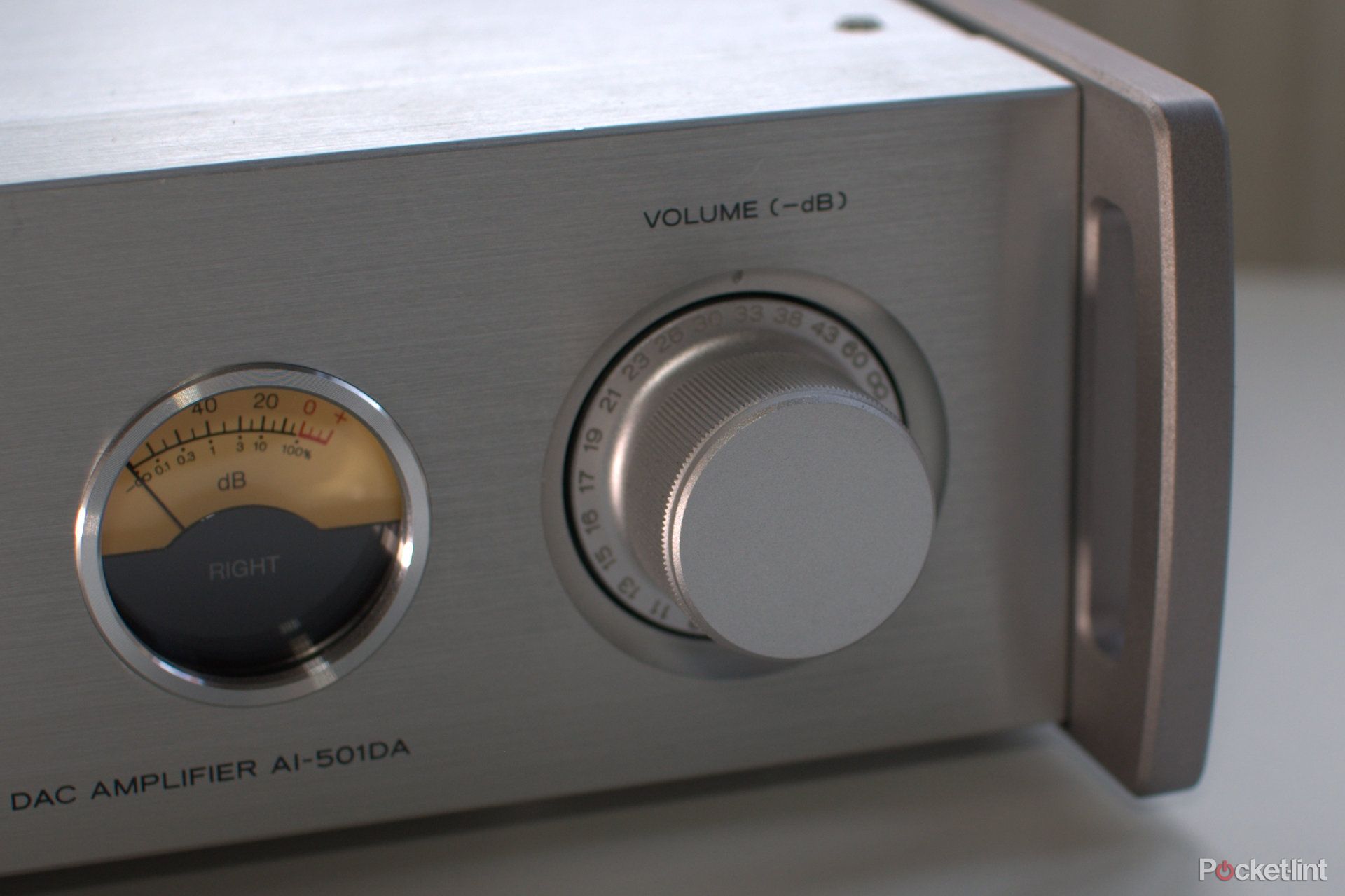If you live on your computer and want to hear better sound then you need to break away from the in-built soundcard and move to an external digital-to-analogue converter (DAC). That's where the Teac AI-501DA - an integrated amplifier and USB DAC - comes in.
Our quick take
We won't pretend the Teac AI-501DA is not expensive, because it is. Now, £700 is not too much money for such a high-quality system, but it is a lot of money for anyone to cough up. By the time you've added decent speakers and any other devices you're looking at a lot of cash.
Initially, we must admit, we just didn't "get" it either. We loved the classic design, but it was the unprocessed sound which wasn't to our taste at first. But the more audio we fed the Teac - and the higher quality the source material was - the more we got it. And then it totally sucked us in because the audio quality is, without doubt, absolutely superb.
But there is one niggle: the USB just sometimes shuts down on Windows. It's easily rectified with a "switch it off, switch it on" solution and it wouldn't put us off buying the Teac, but it's an issue nonetheless - if you have one and find the same issue we'd love to hear from you in the comments below.
After weeks of listening Teac had to prise this machine out of our hands because we loved it so much and didn't want to give it back - how's that for testament to a product being top quality? In the end the AI-501DA is among our favourite pieces of audio hardware ever.
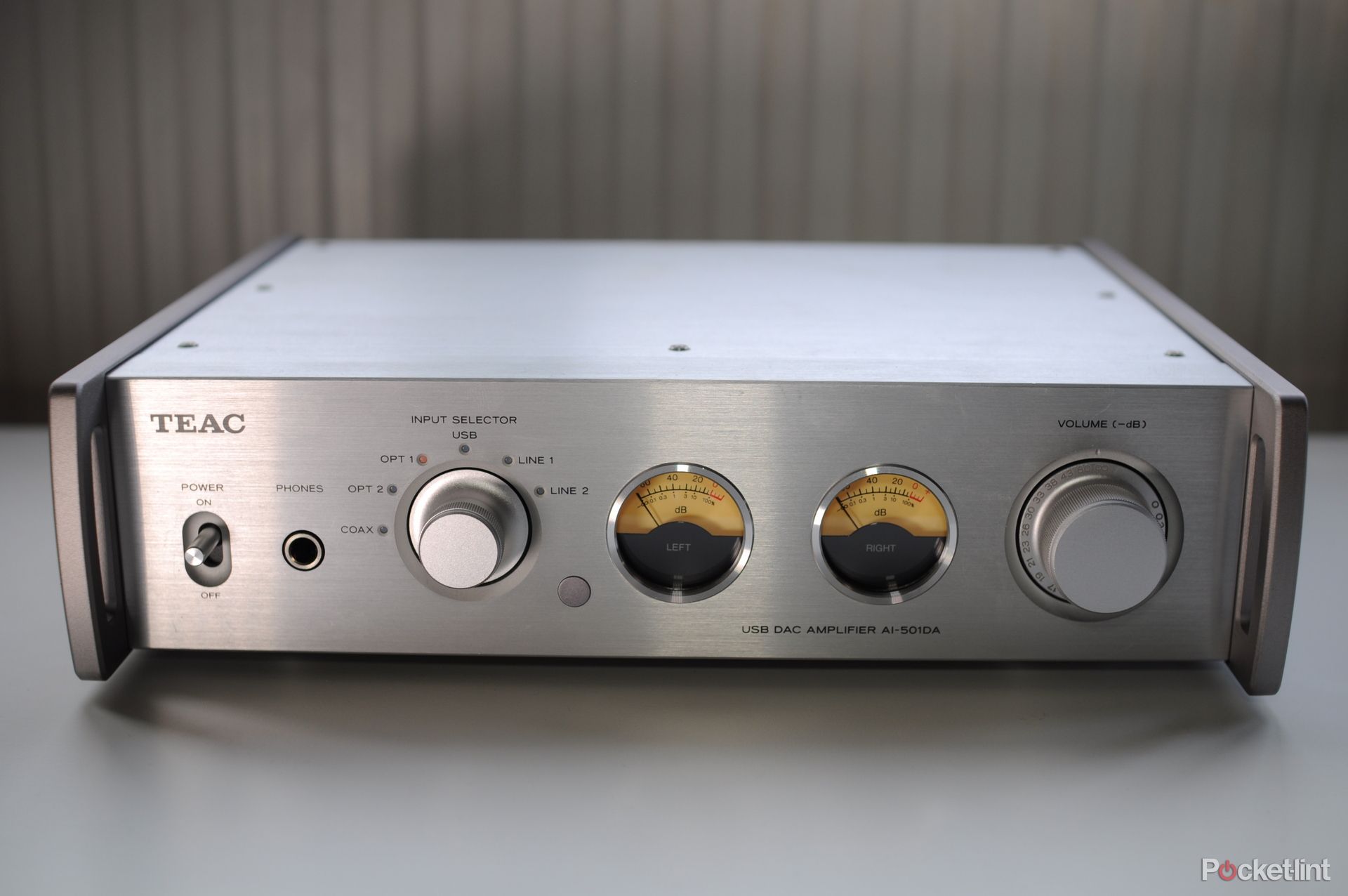
Teac USB DAC Amplifier AI-501DA - 4.5 / 5
| FOR | AGAINST |
|---|---|
|
|
The Teac's aim is to take any audio source you may have and pump it out of your speakers or headphones with the best possible quality. You can give it digital or analogue sources to amplify, or connect it up to a computer via USB for amazing sound quality.
But at £700 it's not cheap, which is likely to limit its audience to true audio obsessives only. We've spent a number of weeks with the AI-501DA to see whether it earns its keep.
In and out
The Teac AI-501DA has two analogue line inputs, in the form of RCA jacks. You can connect pretty much anything to these: from a cassette deck, through to an MP3 player. There are two optical inputs, and one coaxial input to extract digital sound from a device - like a CD player, or games console - and output brilliant lossless sound quality.
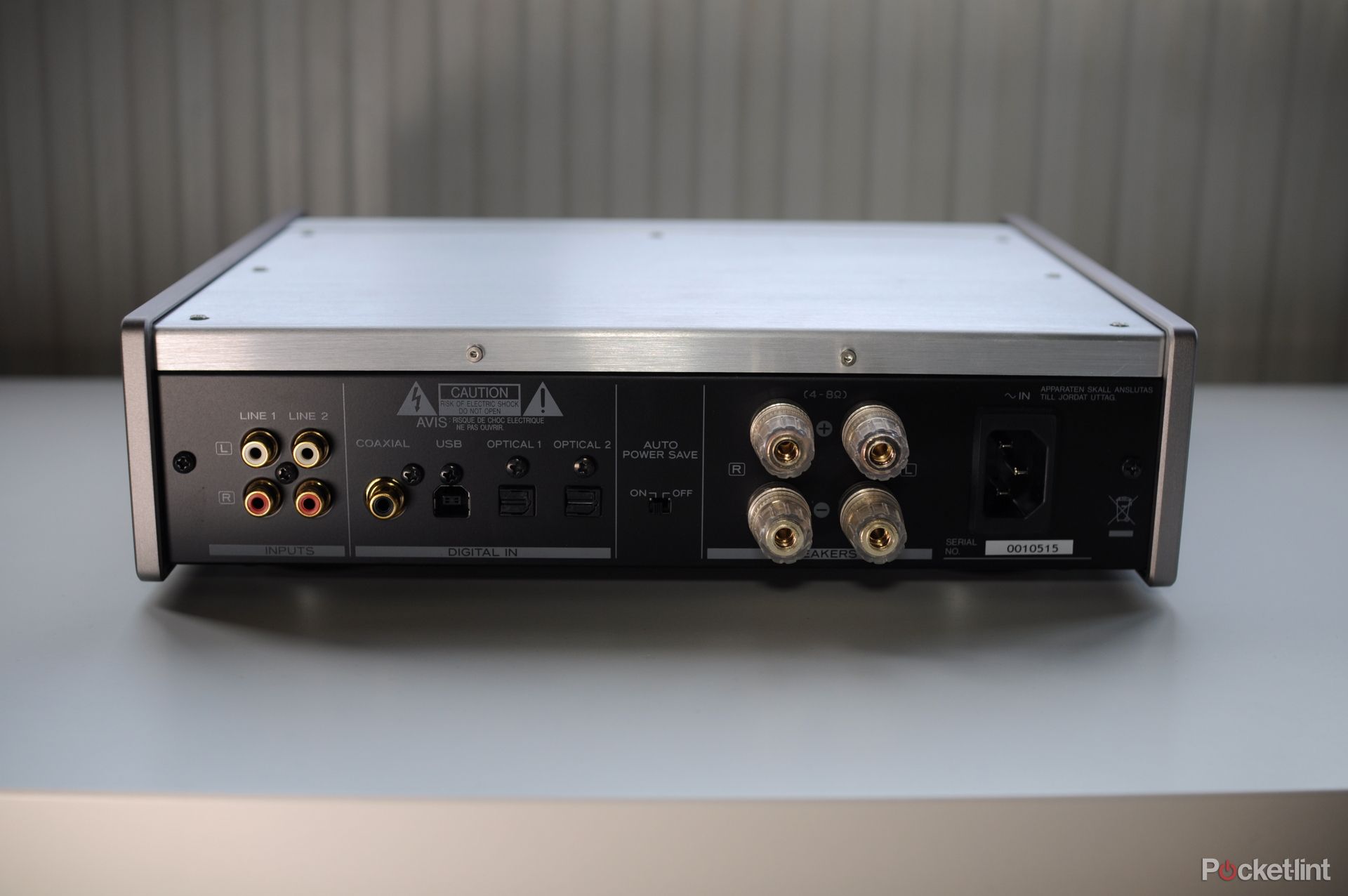
Then there is the all-important USB socket. This is connected to your computer, and will allow the Teac device to act like a soundcard. If you don't have audio built-in, then this will give you a high-quality way to listen to things from your computer. It's also the only way to get very high-resolution audio into the Teac to melt your ears with joy. The device supports 24-bit/192kHz input (24-bit/96kHz via the optical S/PDIF in).
The only output is, of course, analogue and is in the form of speaker outputs, delivered at 90W per channel. These are bindings that you can either thread a speaker cable through, to keep it in place, or fit with banana plugs. We find banana plugs to be the best option, but whatever solution works best for you.
Knobs and switches are things of beauty
The volume dial is a bit of gear that we think is hugely underrated. There was a time when every piece of audio equipment had a dial, but that was before remote controls came along and ruined the party. The problem was that if you had a remote and a dial volume control you either needed to motorise the dial, or design one that didn't really adjust anything, but electrically controlled the volume. Back in the day, the later wasn't really an option because of cost. But even so, volume dials have died out somewhat, and that's a shame. Why? Because nothing gives you a faster or more intuitive way to adjust something than a lovely tactile dial.
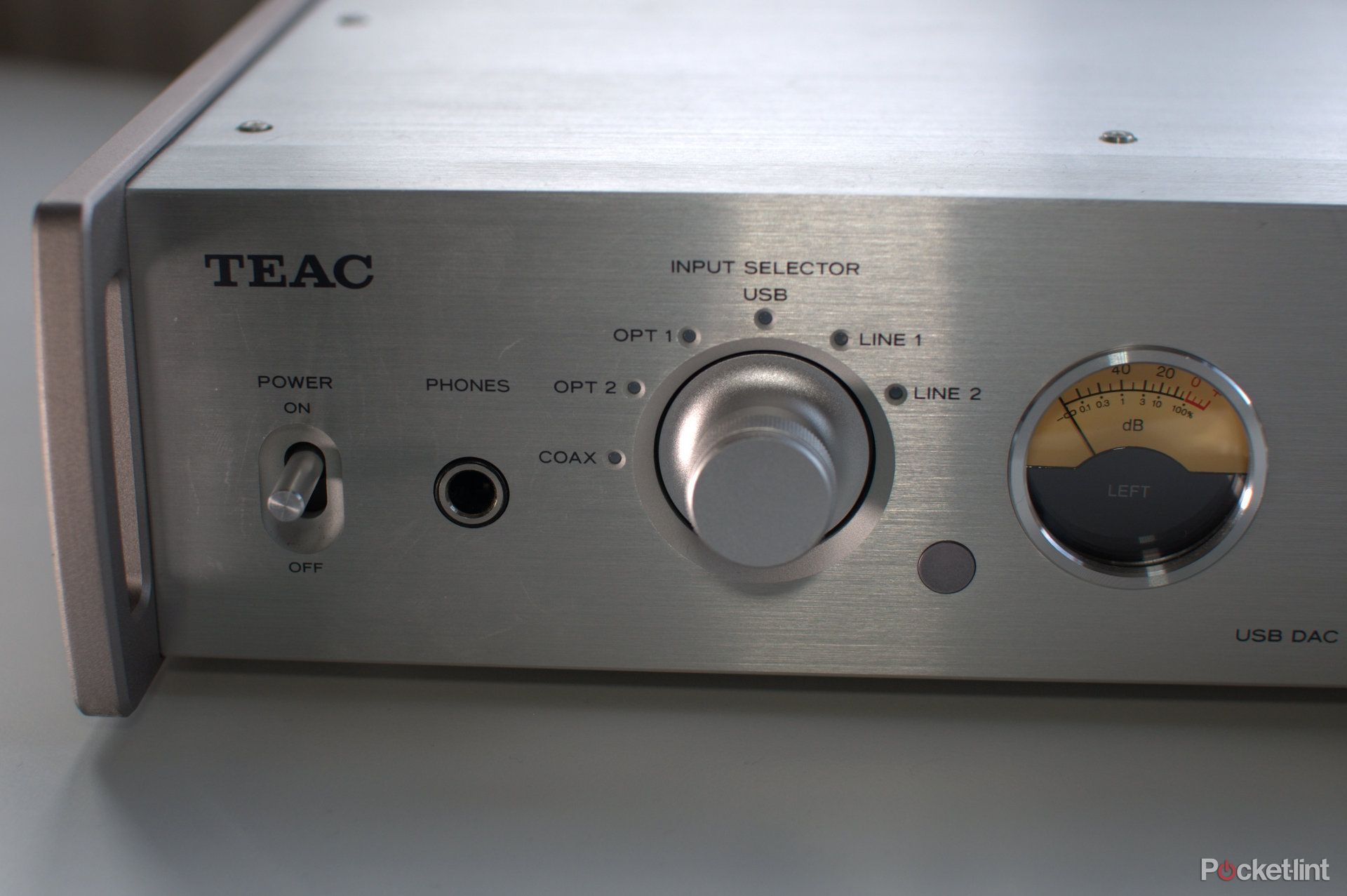
Music too loud? Then grab the dial and shush it a bit. Want to hear that killer bassline? Yank it towards 11 - although the precision device that the AI-501DA is it deals with volume in -dB. However you look at it, it's cool to have dials - which is a very long-winded way of declaring our love for the Teac AI-501DA.
There's a power switch too - a proper clicking power switch. There was a time when all devices had switches like this; we remember it well and think they are fantastic. Each time we switched the Teac on was a moment of beauty.
Get used to untouched sound
We've used a lot of high-end headphones and amps in our time which typically deliver an "untouched" sound quality. It takes some getting used to, but for audio fans in the know it's a glorious sound. And it's something that the Teac delivers to perfection. Plug it in via USB and what you hear is the sound presented without any enhancement.
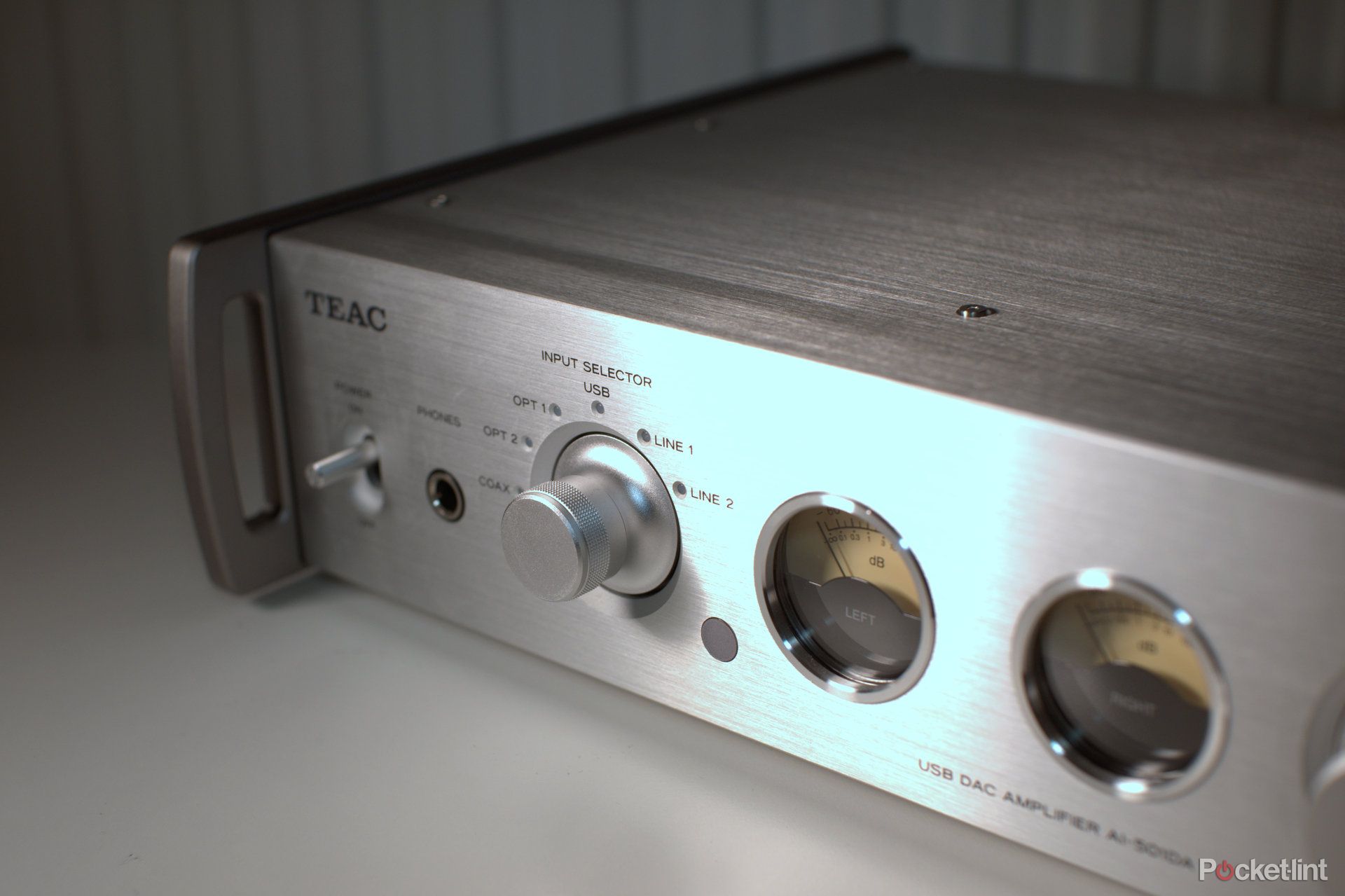
Indeed, there is no way to adjust the sound from this DAC at all. In practical terms this clean sound is bad news when the Teac is fed with low-quality audio. The fact is, equalisation can hide a multitude of sins, and a lot of people will ignore the shortcomings of compressed music when there's a nice lump of bass to warm your ears. The Teac doesn't add that, so unless your speakers and headphones have their own characteristics, then you're going to be disappointed.
Via USB you get access to massive bitrate increases though, so if you can track down 24-bit/192kHz high-resolution audio then you can listen to studio quality recordings that exceed CD output. The problem you're going to have is that you won't find much material from the "popular music charts" in this format. We hope this changes, because lossless high-quality, high-bitrate audio is mind-blowing - definitely worth searching it out. But you probably knew that already if you're considering this Teac in your set-up.
Sound quality
We used some high-end Dali speakers and Denon headphones to test the sound quality of the AI-501DA. Our ears were never disappointed. The quality is, without doubt, divine.
Clarity is breathtaking, and given some decent audio - we've been testing from a CD, iTunes lossless, as well as other lossless formats and high-resolution audio from other stores - we just couldn't get over how rounded and crisp the sound was. It makes going back to other devices a bind.
The more we listened the more we fell in love with how the Teac made everything sound. We used some really nice headphones, some with a slight bias to bass frequencies, and we got a real kick out of what we were hearing.
Our one complaint is that there's a lack of studio quality recordings out there. Now that's not Teac's fault by any means, but if you're a pop prince like us then we'd like to hear some Ellie Goulding in said quality - we would happily pay a premium to listen to such recordings.
What you can find in studio quality is a load of jazz music, and the odd lady singing some classical tunes. It's a good demo of top-spec clarity, and might be spot on for your musical tastes, but it's not what we chose to listen to. Rumour has it Sony is going to unveil a HQ audio store soon, so we're keen to see how that pans out as it ought to mean a huge catalogue of audio.
Working with a PC
The USB input is one of the AI-501DA's crucial features for us. No matter what PC or Mac you have, the chances are the audio hardware won't be high-end. It might be very good, but the Teac should do a better job.
We used it with a Windows machine, where it's plug and play operation was simple to set up. USB soundcards have been around a long time now, and they're easy to understand. Windows supports them natively in many cases. In this case though, there is a driver for both Windows and Mac, and a high-resolution audio player for both that allows you to play audio encoded at much higher quality than a CD. These apps are very useful, although the player app isn't exactly beautiful to look at.
But there was one glitch in our use: at times the Teac would just vanish from the sound devices list. We never got to the bottom of this, but it was usually solved by turning off the amp and then turning it back on again. That old trick. Sometimes we needed to select the device again in Windows, but that was rare. This was annoying when it happened, but it didn't happen often, and once we worked it out, we understood how to fix it. This is most likely a driver issue and we've queried it with Teac to see if they can find out the source of the issue.
To recap
A fantastic audio component that is only held off a five-star review by its price and some of the problems we had on Windows with the USB.

